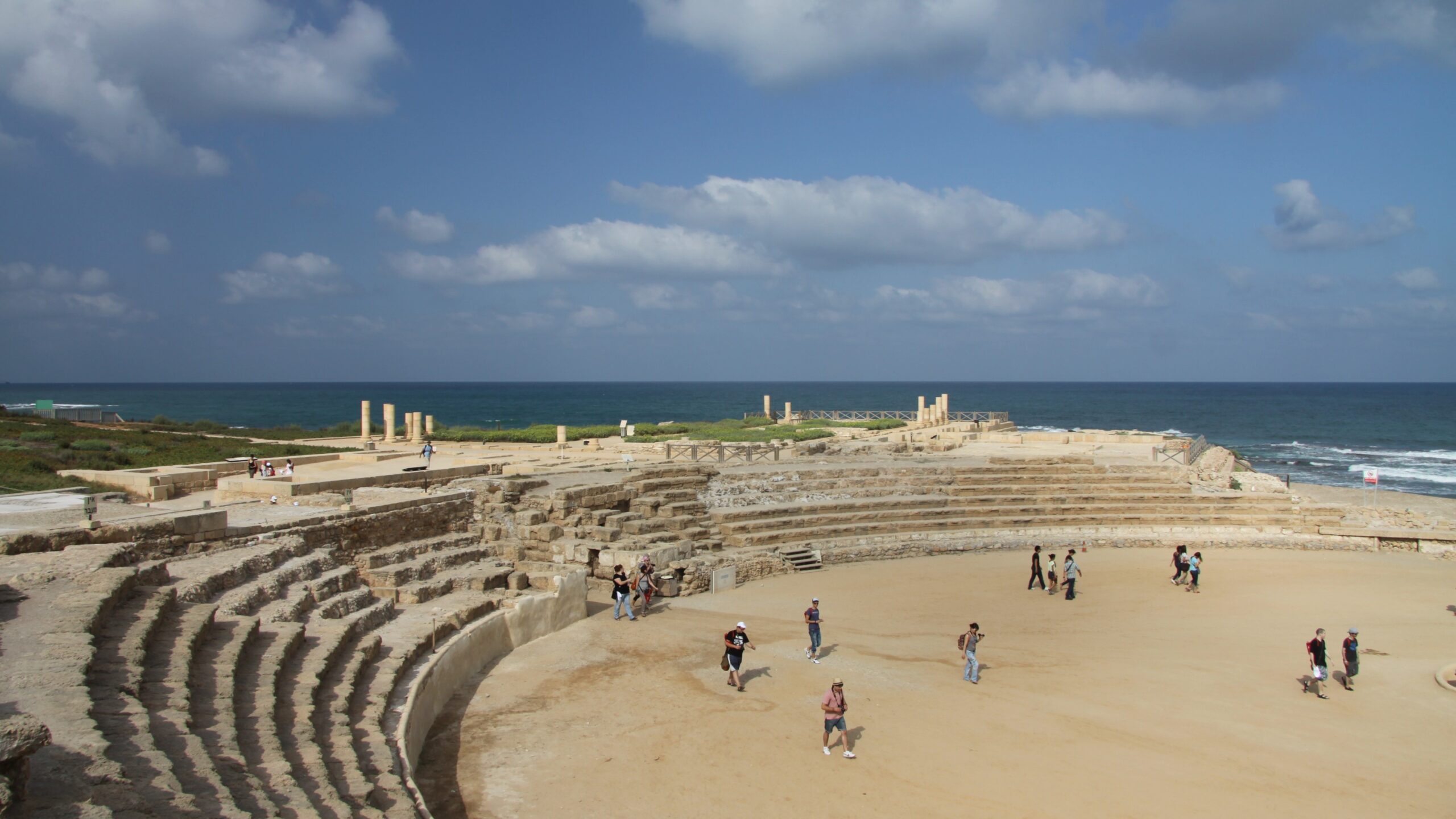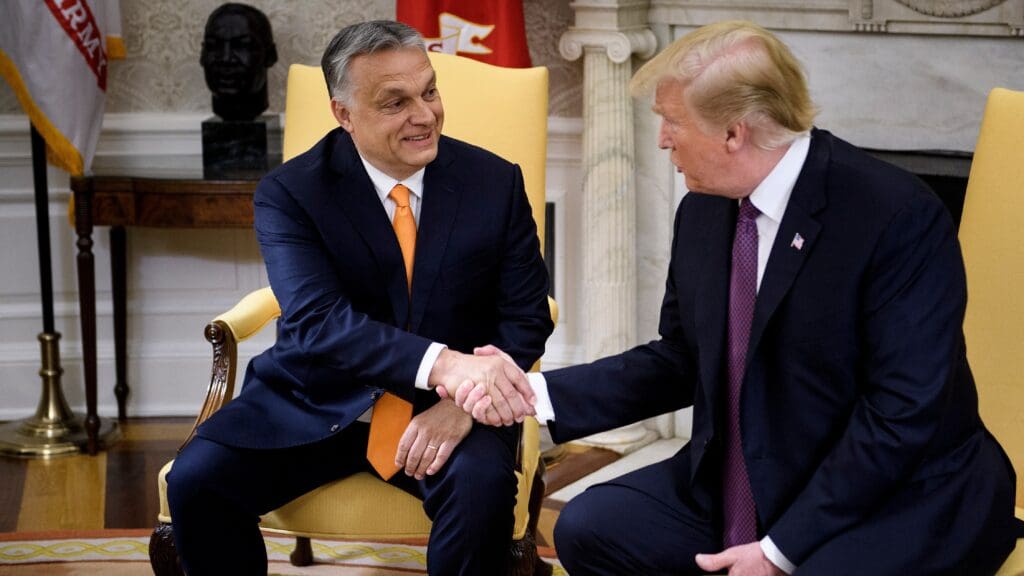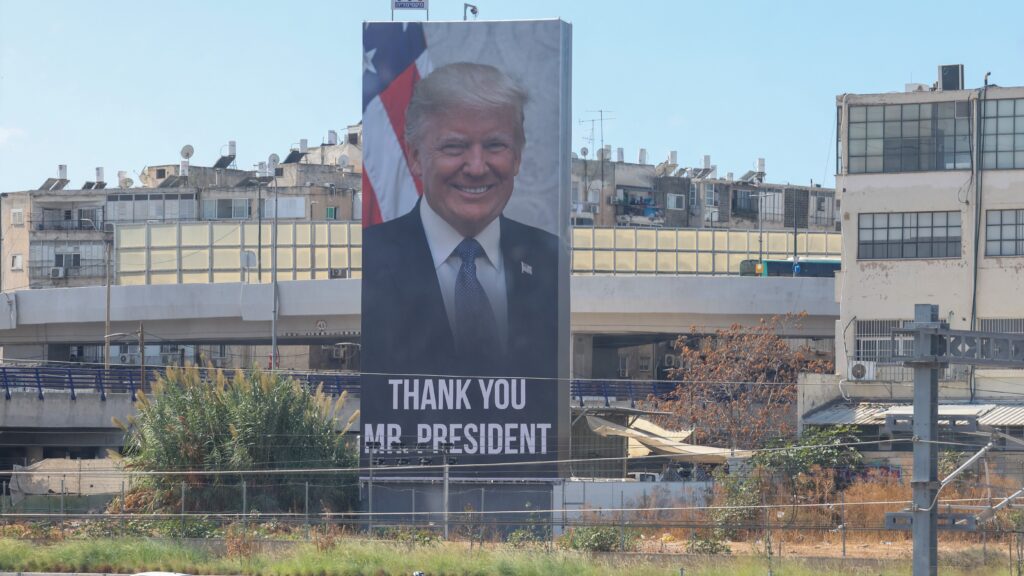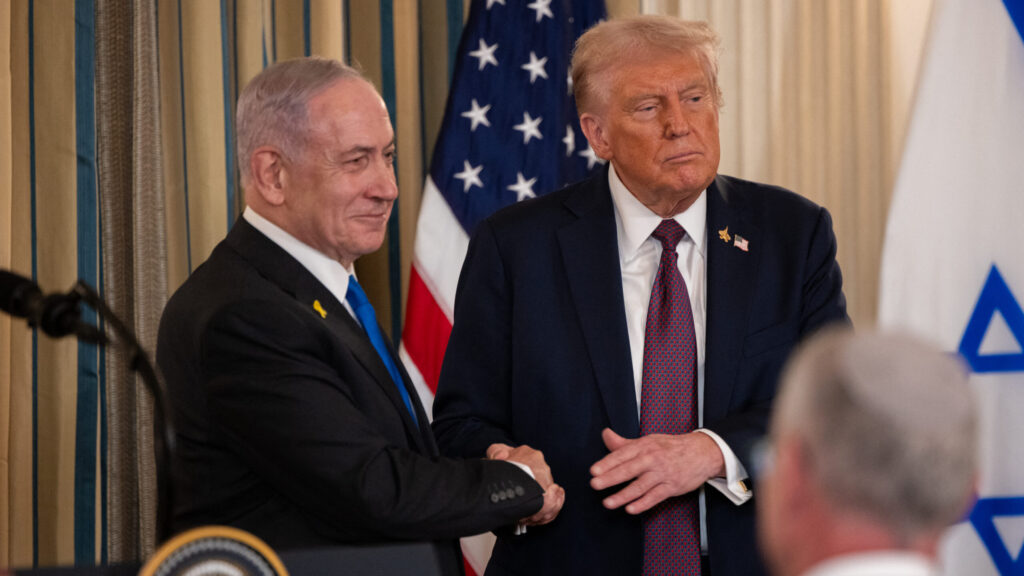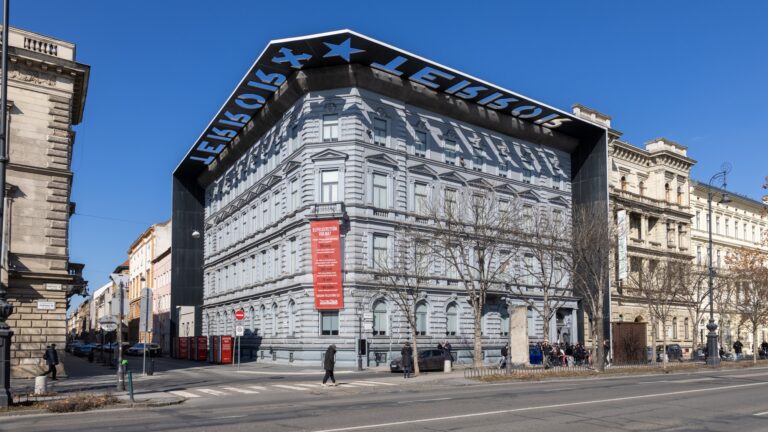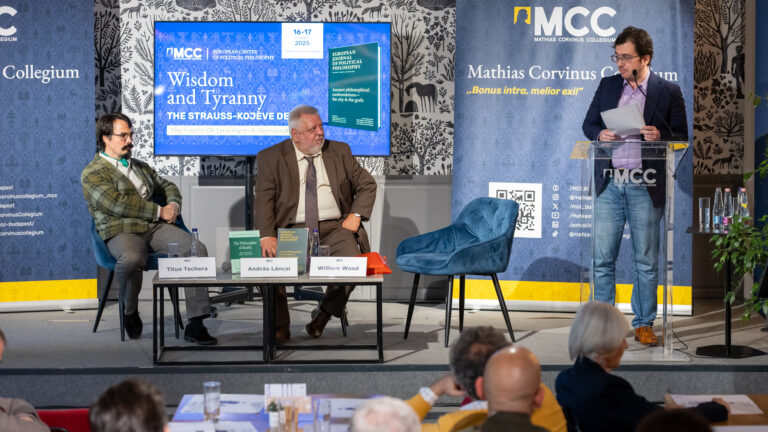The first Jewish Revolt that began in 66 AD, and ended with the destruction of the Second Temple at the hands of Titus’ armies in 70 AD, began with a property dispute between Greeks and Jews in the city of Caesarea. Then a bustling and cosmopolitan port owing to the visionary investments and construction projects of Herod the Great, Caesarea was at the time the capital of the Roman province of Judea and home to officials and procurators such as Pontius Pilate. Although details remain unclear and disputable, it seems safe to estimate that disagreements between Caesarea’s Greek and Jewish inhabitants over land and property sales, coupled with heightened religious sensibilities, figured the straw that broke the camel’s back for the Jewish populations of Roman Judea and Galilee, increasingly dissatisfied with their overloards’ governance. Their subsequent revolt against Roman rule sparked a chain of events that would eventually lead to the effective elimination of Jewish political and religious pre-eminence in the Holy Land for almost two millennia.
During a heated property dispute in the 1990s in Jerusalem’s Old City between the Greek Orthodox Church and the Mulsim Waqf (a foundation responsible for Muslim holy sites), which also eventually involved the Israeli state, Prime Minister Yitzhak Rabin quipped to critics of his handling of this dispute: ‘Zionism is not immovable property.’ To this statement the Greek Patriarch of Jerusalem Diodorus responded pointedly: ‘If you see Yitzhak Rabin, tell him I said the only important thing is real estate, just real estate….What is Zionism anyway, if not Judaism plus real estate?’[1] Recently there has been considerable international attention on Jewish organizations, such as Ateret Cohanim, that seek to purchase land in sensitive areas such as Jerusalem’s Old City. A recent disputed contract for a Jewish developer to lease the large parking lot in the Old City’s Armenian Quarter made international news and controversy, especially after a violent hit-job at the Armenian Patriarchate seemingly related to this deal gone bad, whose consequences also included the deposition of the Armenian Apostolic Patriarch. Today, notwithstanding the undoubted leverage that Israel and Jewish organizations have, it would be hard to underestimate the power and influence that a few Greeks religious leaders retain owing to their property holdings, keeping true to Patriarch Diodorus’ dictum that in the Holy Land, ‘the only important thing is real estate, just real estate.’
Most Jerusalemites and politically conscious Israelis and residents of the Palestinian Territories are aware of the Greek Orthodox Church’s massive real estate holdings in the Holy Land, yet few outsiders seem to grasp the historical and enduring importance of the local Greek Orthodox Church. Below we shall take a summary look at the Greek Orthodox Church’s history and enduring property holdings in Israel. These are both factors that should be considered carefully as one regards the seemingly countless layers of complexity underlying religion, politics, and public policy in Israel and the region today.
‘Of all the churches in the Holy Land, the Greek Orthodox Church is the most ancient and long-standing’
Today, out of the approximately 190,000 Christians living in Israel (according to official numbers and not counting another 50,000 or so living in the Palestinian Territories), about 30–35 per cent identify as belonging to the Greek Orthodox Church, and 90 per cent identify either with the Greek Orthodox Church or with the Greek Catholic (or ‘Melkite’) Church, the latter of which largely retains Orthodox liturgical practices but is in union with the Holy See. Of all the churches in the Holy Land, the Greek Orthodox Church is the most ancient and long-standing—tracing its origins back to the Pentecost and rivalling the other ancient Christian metropolitan areas in Rome, Antioch, Alexandria and later Constantinople. The Greek Orthodox presence in Jerusalem was granted ‘patriarchal’ status during the Council of Chalcedon in 451 AD, and sided with other Eastern Churches during the eventual schism in 1054 AD.
The most significant interruption to the Greek Orthodox presence in Jerusalem took place during the Crusades, when invading Latins sent the Greek Orthodox Patriarchate packing to Constantinople, establishing in its stead the Crusader-era Latin Patriarchate of Jerusalem, which itself did not outlast the Crusades and was only re-establishing in Jerusalem in 1847. Local Christians claim that during the Muslim reconquests of Jerusalem in 1187, local Orthodox Christians participated in Salah-al-Din’s armed campaign and later played an instrumental role in the ousting of remaining Latin Crusader forces from Acre in 1291, their last major outpost in the Holy Land. After reportedly striking an advantageous deal with Salah-al-Din, for centuries thereafter the Greek Orthodox Church had to vie with other competing local churches under subsequent Ayyubid and Mamluk rule. It was only with the advent of Ottoman rule in 1516 that the Greek Orthodox Patriarchate returned to Jerusalem from its Crusader-era exile in Constantinople, maintaining all the while strong ties with Constantinople’s Ecumenical Patriarch (in contrast, today’s relations between the Ecumenical Patriarch and the Greek Patriarch of Jerusalem are notoriously poor and prevent effective collaboration on many fronts).[2]
Throughout the Ottoman Period, which lasted until 1918, the Greek Patriarchate established itself as a kind of primus inter pares among local churches. It also jealously guarded its ‘Hellenistic’ character, gradually working to ensure that only Greeks could occupy critical leadership positions in the local Greek Orthodox Church, at the increasing exclusion of local Arab clergy. Since 1662, the Greek Patriarch must be chosen from among the Constantinople-based ‘Brotherhood of the Holy Sepulchre’, of which the Patriarch automatically becomes the leader.[3] Today in Israel, as historically under prior Ottoman and British rule, ‘no local Arab priests serve in key roles in the [Greek Orthodox] church.’[4] Over the centuries of Ottoman rule, the struggle between Greek clerics in leadership and largely Arab Orthodox congregations was not limited to the Holy Land, but the Greek Patriarchate of Jerusalem was singularly successful at maintaining exclusively Greek leadership for its highest positions.[5] Indeed, there is a strong case to be made that the (Melkite) Greek Catholic Church’s rise in the Levant 1724 is owing in part to disputes between Greeks and local Christians over power, influence and, yes, real estate. Struggles between the Greek leaders of the local Greek Orthodox Church and local Arab clergy and believers persisted throughout the Mandate Period, leading to widespread polemic and protracted disputes. The notable Mandate period Orthodox Arab and anti-Zionist newspaper, Filastin, founded by the local Orthodox Arab Issa Daud al-Issa, opined: ‘It is true that Palestine is under two Mandates, one the British and the other the Zionist, and it is true that the Orthodox community is under three mandates: the British, the Zionist, and, thirdly, the Greek.’[6]
During the Mandate Period, local Orthodox Arabs—often supported by local Muslims allied in the anti-Zionist cause—pressured British authorities as much as possible for change, which resulted in a protracted and disputed election for the Greek Patriarch as of the death of Patriarch Damianos in 1931, which controversy only settled among the much greater upheavals occasioned by the 1936–1939 Arab Revolt in British Palestine.[7] These seemingly distant facts are not mere historical trivia in today’s Holy Land—their memory significantly shapes discourse and attitudes among the local Christian community and necessarily its interactions with Israeli authorities. Even in recent years lawsuits between Arab Orthodox Christians and the Greek Orthodox Church are not uncommon, whereas it is widely admitted that ‘the Patriarchate has consistently acted to prevent the congregation from gaining any semblance of control over the lands it owns and administers. This evasion [has included] attempts to mortgage the real estate to the Greek government; attempts to register several of the congregation’s plots in the Patriarchate’s name; and resisting, usually unsuccessfully, efforts by the authorities to provide the congregation with legal access to the Patriarchate’s real estate.’[8] Lack of Arabization still differentiates the Greek Orthodox Patriarchate from other Patriarchates in Jerusalem, including the Latin Patriarch, which had two successive Arab Patriarchs in the 2000s and 2010s.[9]
During the Ottoman period the Greek Orthodox Church was not merely bolstering the foundations of its enduring ‘Greekness’. It was also an active and inspired player in the local real estate market. Especially during the latter half of the 19th century, when the Ottoman Empire became progressively weaker and poorer, the local Greek Orthodox Church embarked upon an enthusiastic programme of property acquisition. Starting from about mid-century, when Jewish families in the Holy Land were still few and largely impoverished, absentee Ottoman landlords ‘especially favoured the Greeks, a community they had more in common with than the other Europeans.’[10] It was only in the last two decades of the century that Zionist Jewish organizations began concentrated efforts to purchase land from local landlords and even the Greek Orthodox Church, although only with rare successes with the latter entity. Meanwhile, it was during the latter half of the 19th century that the Greek Orthodox Patriarchate built up a stunning real estate portfolio, whose total extent today remains as unclear as its value is hard to fathom.[11]
‘The Greek Orthodox Patriarchate is still the “second biggest owner of real estate in Israel after the Israeli government”, and by far “the largest and wealthiest church in the Holy Land”’
According to an official British inquiry in 1921, the Greek Patriarchate ‘owned and administered 631 assets in Mandatory Palestine’, excluding assets in Jordan, the Sinai Peninsula, Cyprus and farther abroad, including the United States.[12] While these assets extend throughout today’s Israel and Palestine, and many have since been sold, the Greek Orthodox Patriarchate is still the ‘second biggest owner of real estate in Israel after the Israeli government’, and by far ‘the largest and wealthiest church in the Holy Land’—a reality accentuated by a 2023 deal between the Greek Orthodox Patriarchate and a New York developer totalling some $216 million. This deal involved only a portion of the Greek Orthodox Church’s holdings in Israel’s capital, some 520 dunams (approximately 129 acres) in Jerusalem’s most upscale neighbourhoods, including the land on which the Israel Museum and several well-known hotels are located. Indeed, it is estimated that the Greek Orthodox Church owns half of the land in Jerusalem. ‘[Government] ministries, hotels, entire blocks of apartment buildings’, the Prime Minister’s residence, Jerusalem’s Great Synagogue, the iconic King David Hotel and the Knesset—all of these are presumably on property that the Greek Orthodox Church leased to the Jewish National Fund for a 100-year rental contract, with the option for a 99-year renewal.[13]
Much about the Greek Orthodox Patriarchate’s holdings in Israel remain shrouded in mystery, and local Palestinian grounds have frequently complained about the Greek Orthodox Patriarchate’s close dealings with the Israeli government, accusing the Patriarchate of selling out the Palestinian cause and future, often for ‘rock-bottom’ prices for long-term leases and even outright purchases to Jewish settler groups. The Greek Orthodox Patriarchate’s land deals with Israel have even made it to the pages of distinguished journals such as Foreign Policy—where a 2019 article accused the Israeli government of ‘fraud and attacks by Israeli extremists’.
The controversy surrounding the much protested election of the last Greek Patriarch Irineos I was directly owing to a property lease gone awry. This affair, which began with several leases of Greek Orthodox Patriarchate to Israeli ‘settler’ organizations in 2004, went all the way to Israel’s Supreme Court and was finally resolved in 2022, some 18 years after the alleged first contracts. From 2001 until 2004 Israel blocked Irineos I’s nomination, and during this time Ireneos alleged that he had been targeted for assassination—according to him, by his local rival the Greek Orthodox Metropolitan Timothy. Later even Prime Minister Ariel Sharon was implicated, accused of having accepted bribes that facilitated Israel’s long-withheld recognition of Irineos I as Greek Patriarch in 2004.[14] Owing to the land scandal near Jaffa Gate, in 2005, Irineos was removed from his post by the Patriarchate Synod in May 2005, a move which he vehemently disputed.[15] When he died in 2023, the current Greek Orthodox Patriarch, Theopilus III, refused to his wishes to be buried in Jerusalem.
Why does all this matter for outside readers?
It is important to understand the Greek Orthodox Patriarchate’s place in the intricate interplay of local and international as well as sacred and profane interests that often seems to govern every important decision in the Holy Land. Pious pronouncements and ‘new ways of thinking’ from Europe and elsewhere abroad almost invariably collapse under the weight of the sheer complexity of local realities, of which the Greek Orthodox Patriarchate and its real estate holdings represent only one of thousands. In what other country do government ministries, the national legislature, the main religious building, the prime minister’s residence, the national museum and most of the prime real estate of its capital city legally belong to the autocratic leaders of a different and competing religion with undisputable foreign allegiances and, at best, little demonstrated loyalty to the state? It is worth pondering this question in depth before pontificating about ‘what is to be done’ to resolve local conflicts.
‘It is important to understand the Greek Orthodox Patriarchate’s place in the intricate interplay of local and international as well as sacred and profane interests’
Patriarch Diodoros supposedly claimed that the Patriarch’s 1500 years of longevity in Jerusalem is ‘because it religiously guards its real estate. “We don’t give up a millimetre.”’[16] This is not, strictly speaking, true, since there are many cases of Greek Patriarchate land sales to Israel throughout the Jewish state’s existence. One recent case that, like most of them, remains impervious to outsiders is the Greek Orthodox Patriarchate’s supposed 2017 sale of over 172 acres of land in and near Caesarea to a holding company registered in the Caribbean and owned by Israelis.
Caesarea is no longer an active port, but like two thousand years ago it has once again become a posh and influential town where the prime minister and other Israeli elites maintain a residence, and where real-estate controversies between Greek sellers and Jewish buyers make national and international waves.
[1] ‘Who holds the deed to the Promised Land’, Moment: October 2004, p. 56.
[2] Ibid, p. 55.
[3] Itamar Katz and Ruth Kark, ‘The Greek Orthodox Patriarchate of Jerusalem and Its Congregation: Dissent over Real Estate’, International Journal of Middle Eastern Studies, 37, 2005, p. 515.
[4] Ibid, p. 509.
[5] Ibid, p. 516–517.
[6] Konstantinos Papastathis, ‘Religious Politics in Mandate Palestine: The Christian Orthodox Community Controversy in the Thirties’, British Journal of Middle Eastern Studies, 43, 2016, p. 264.
[7] Ibid, 271–274.
[8] Katz and Kark, ‘The Greek Orthodox Patriarchate’, 523–525.
[9] Ibid, p. 529.
[10] Ibid, p. 55.
[11] Katz and Kark, p. 511–512.
[12] Ibid, p. 514.
[13] ‘Who holds the deed to the Promised Land’, p. 54–55.
[14] Ibid, p. 72.
[15] Katz and Kark, p. 511.
[16] ‘Who holds the deed to the Promised Land’, p. 56.
Related articles:

